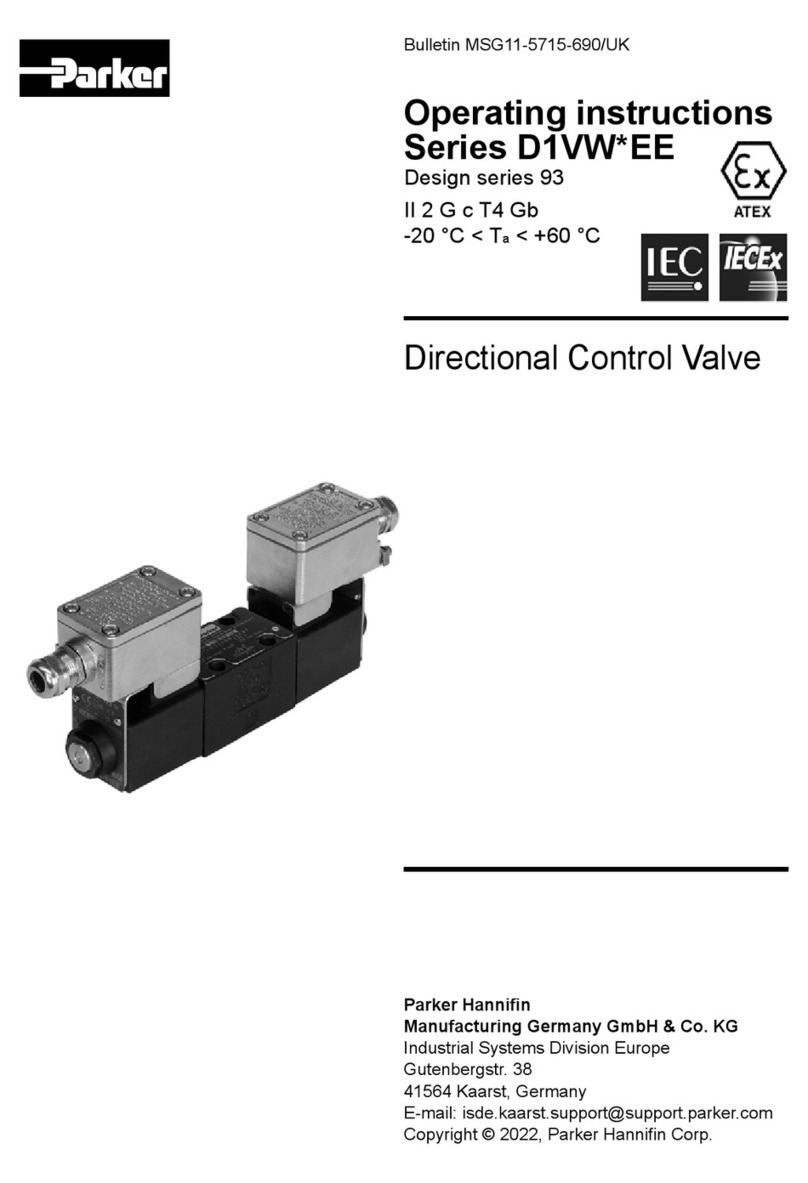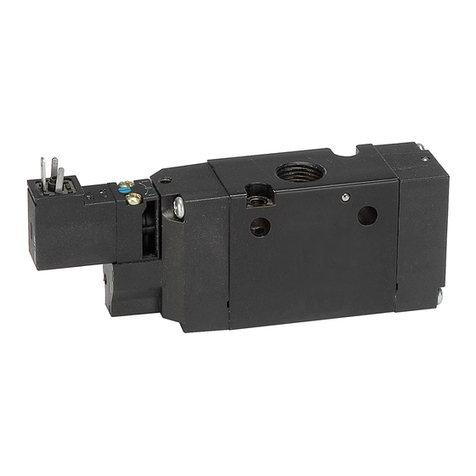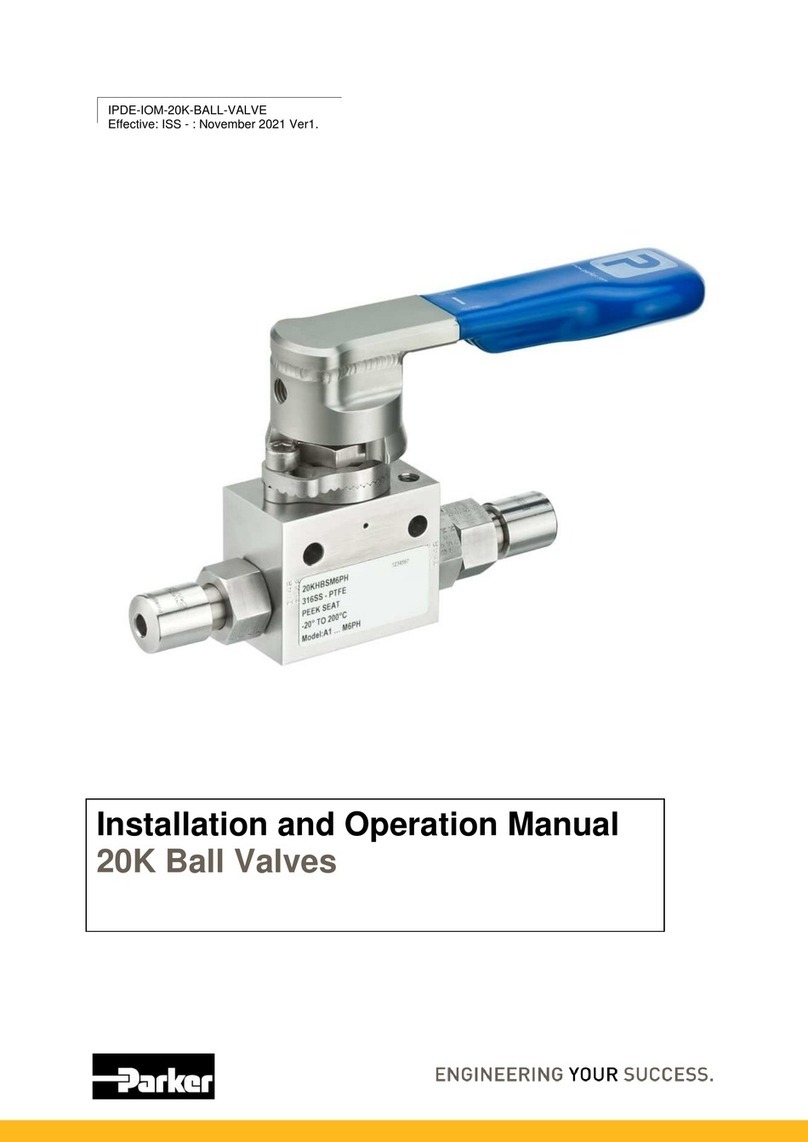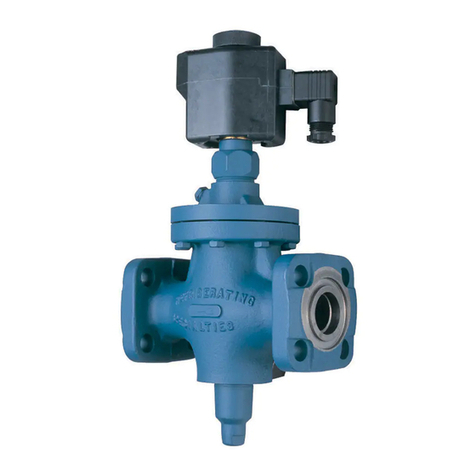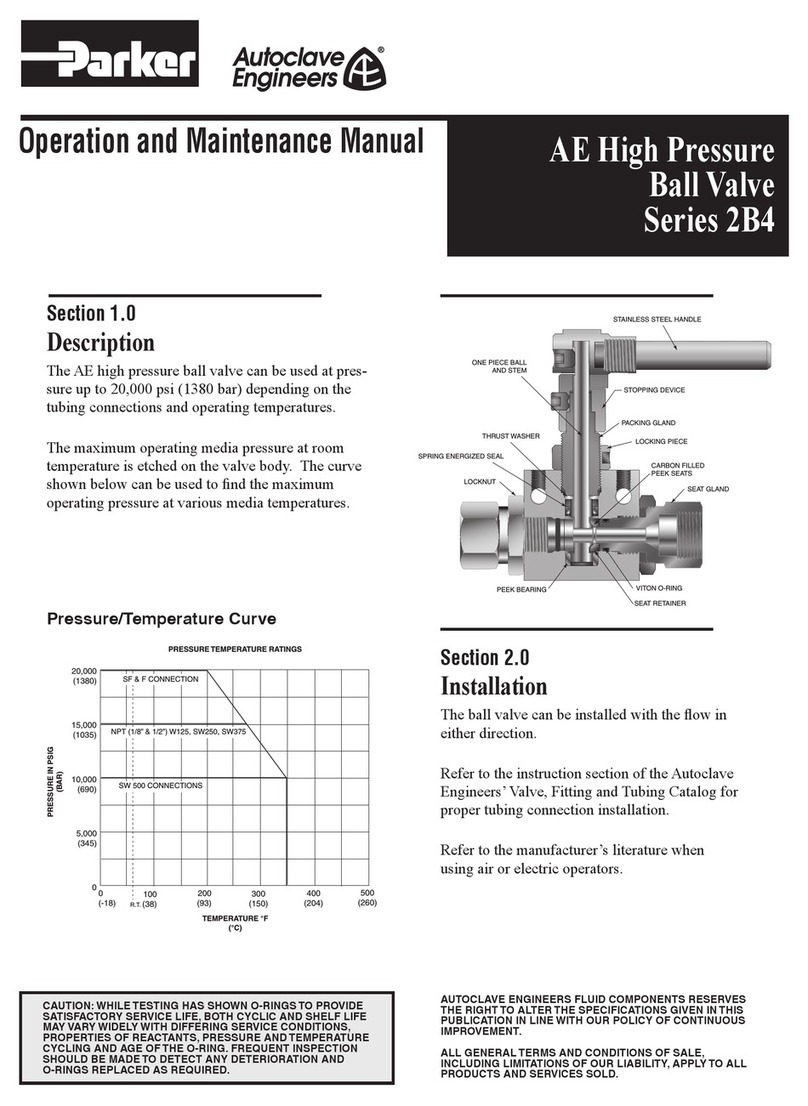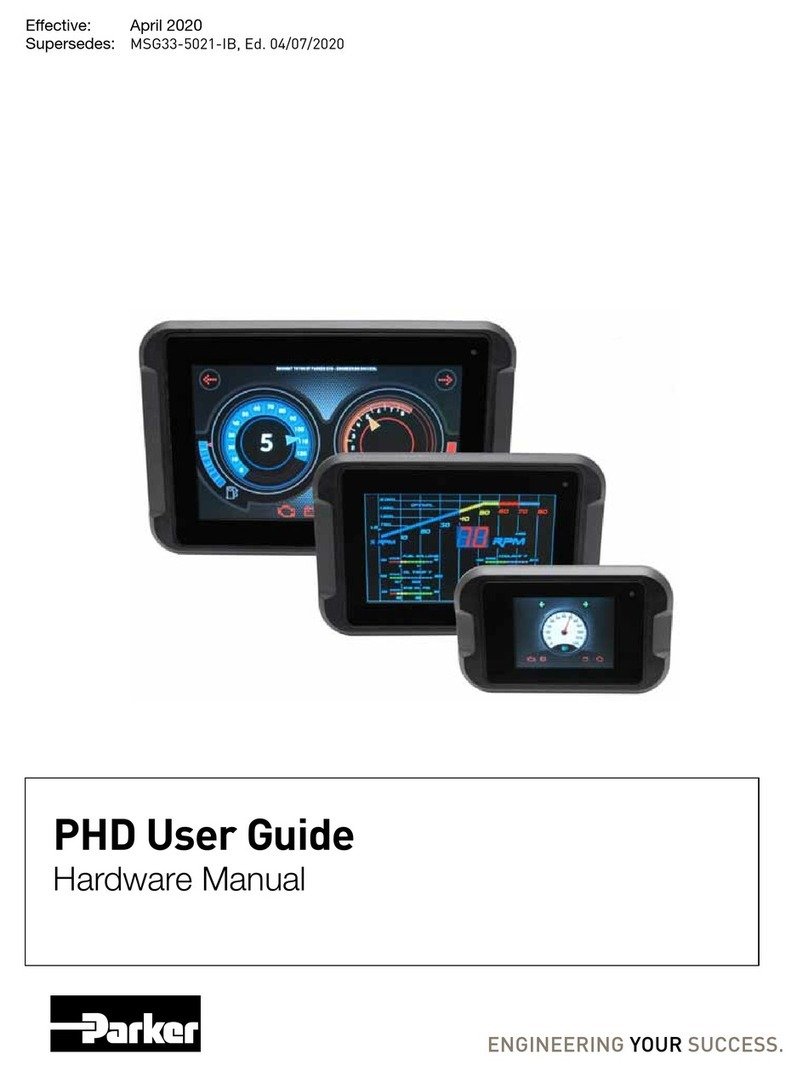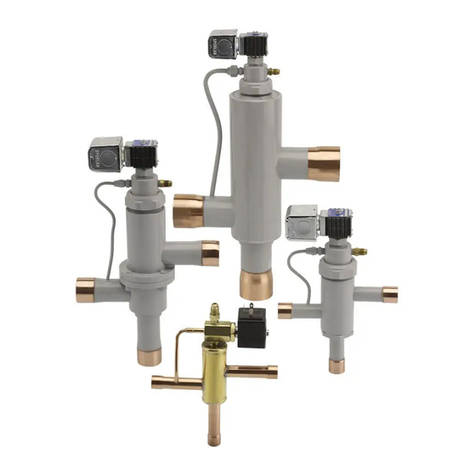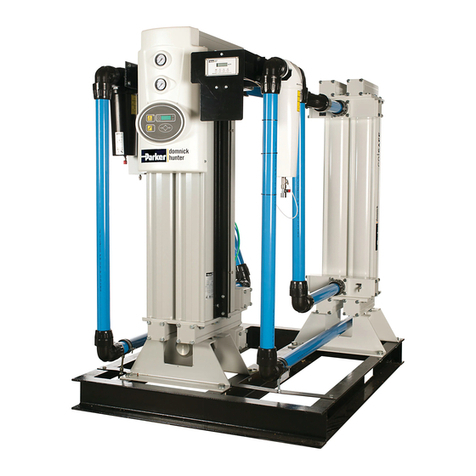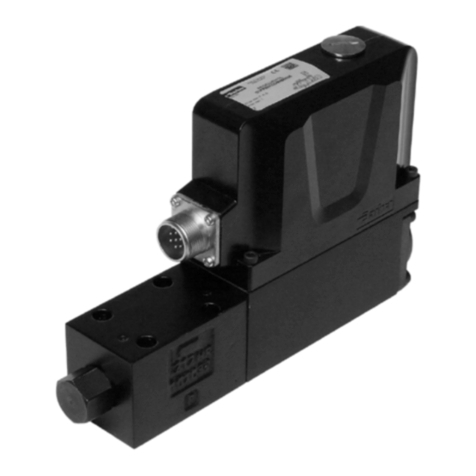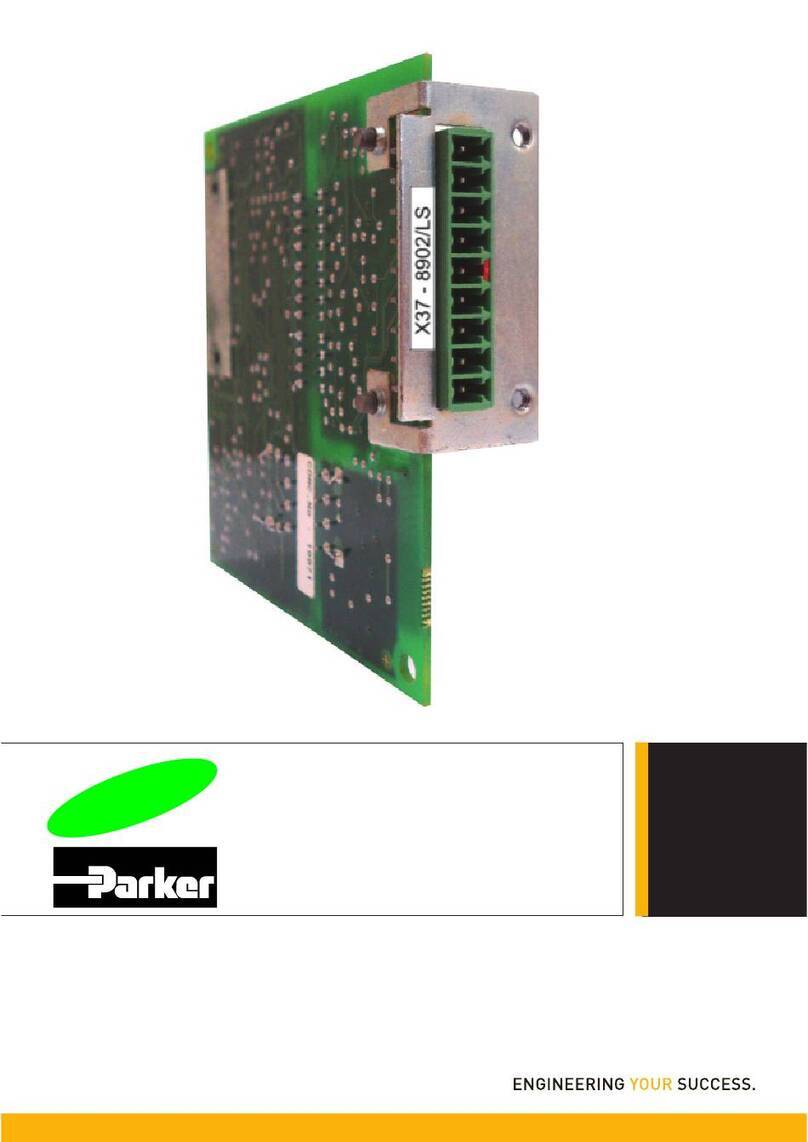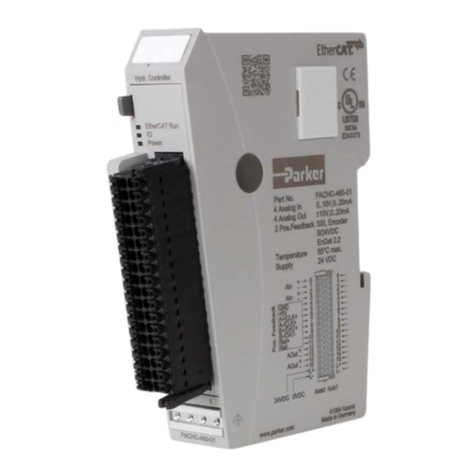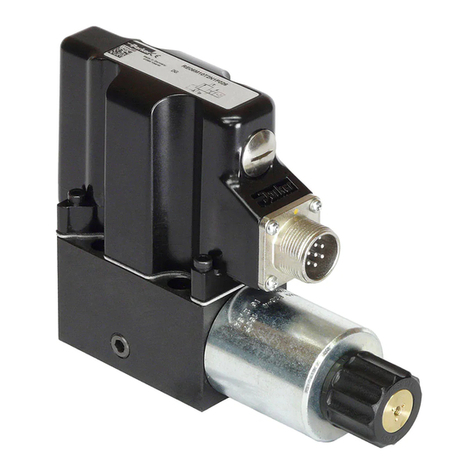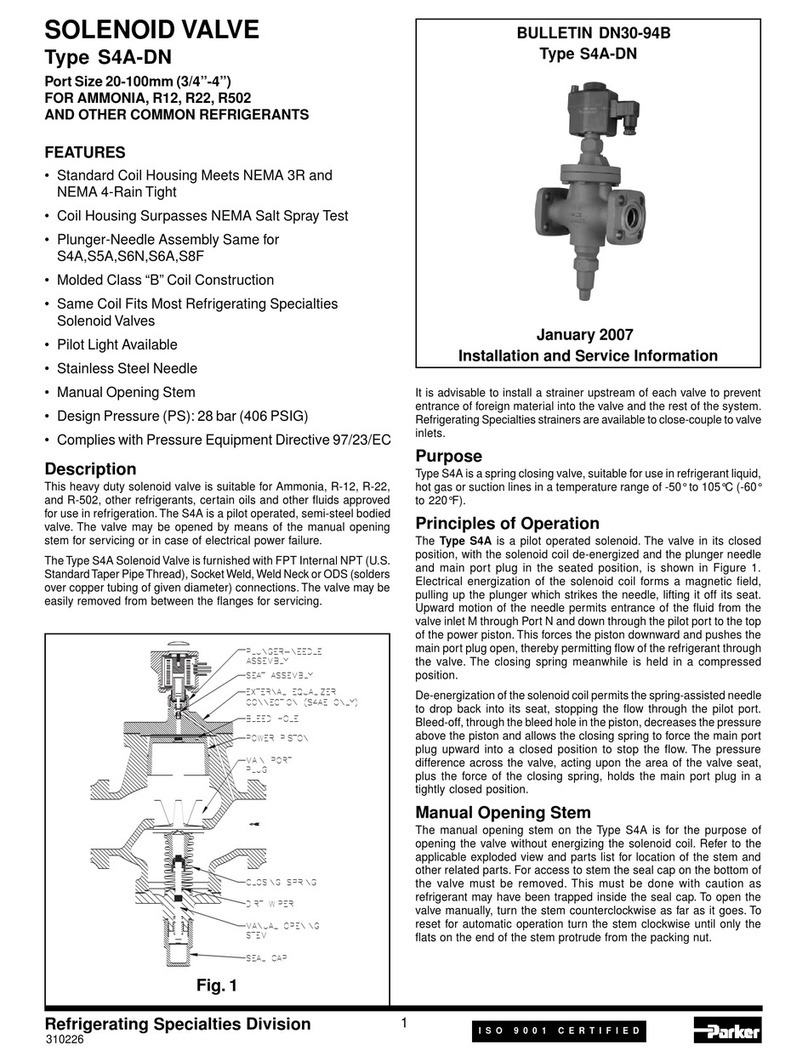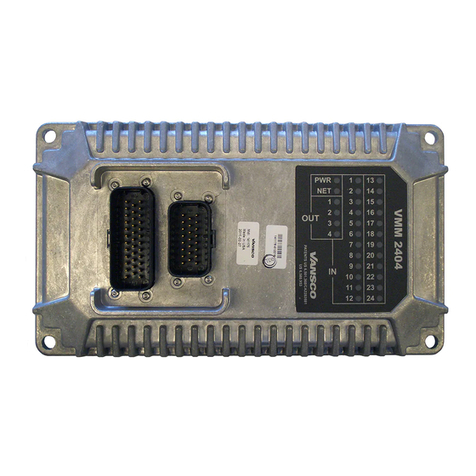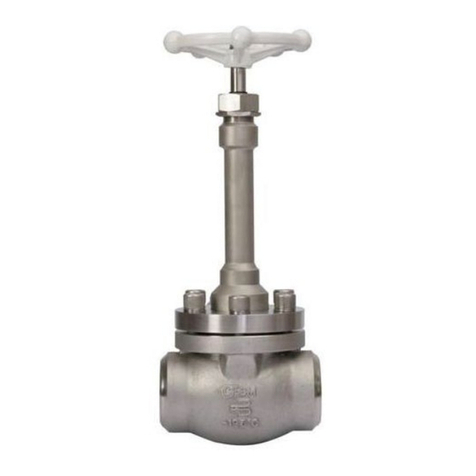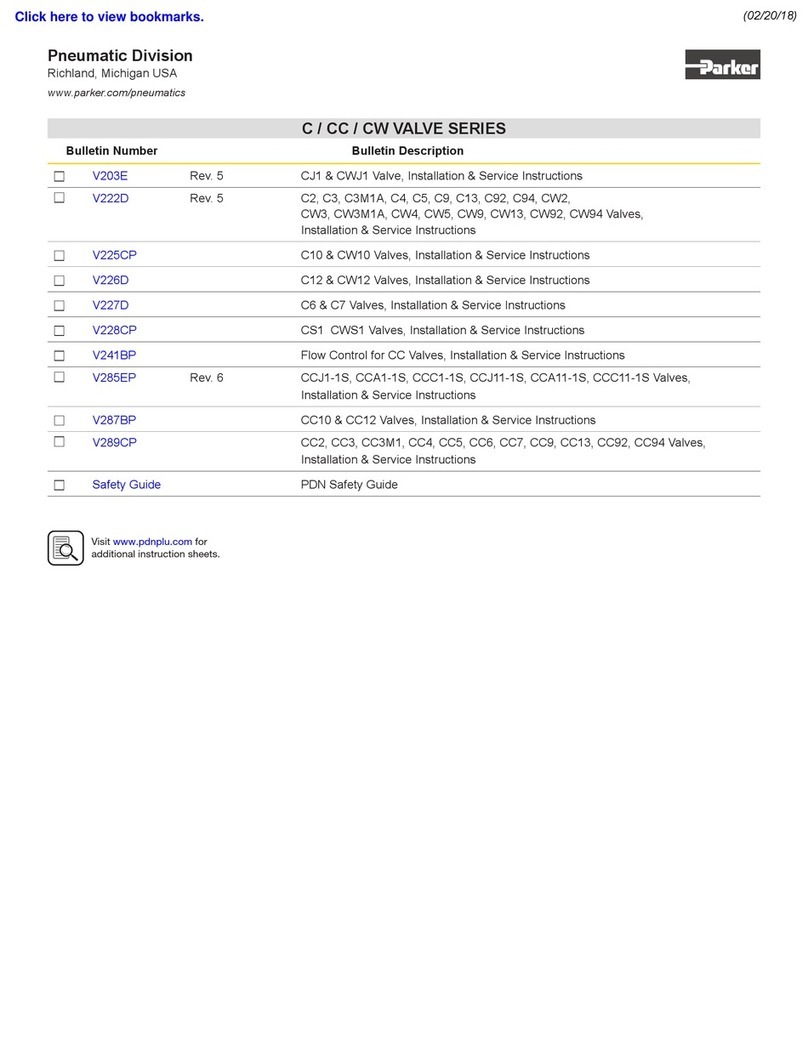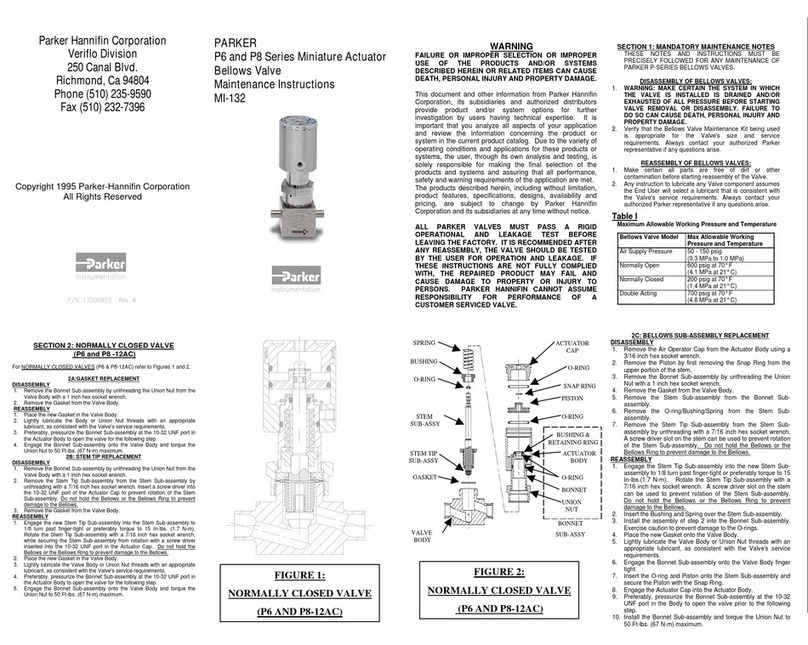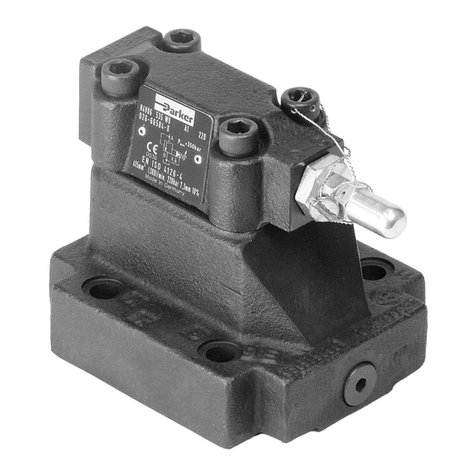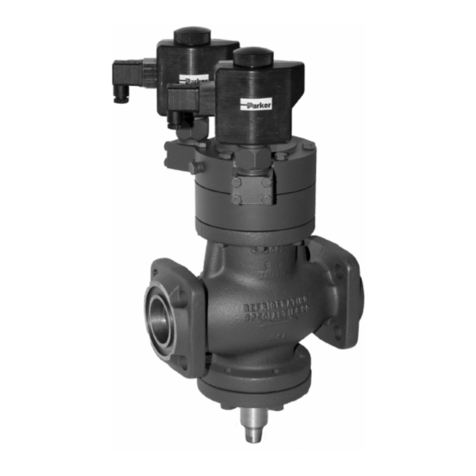
Prop. Directional Control Valve
Series DFplus
Operation Manual
7Parker Hannifin Corporation
D_FP_D 5715-695 UK.indd 16.09.21
2. Safety instructions
Please read the operation manual before installa-
tion, start-up, service, repair or stocking! Disregard
may result in damaging the valve or incorporated
system parts.
Symbols
This manual uses symbols which have to be fol-
lowed accordingly:
Instructions with regard to the warranty
Instructions with regard to possible dam-
aging of the valve or linked system com-
ponents
Helpful additional instructions
Service
Workings in the area of installation, commissioning,
maintenance and repair of the valve may only be
allowed by qualied personnel. These are persons
which have, because of education, experience
and instruction, sufcient knowledge on relevant
directives and approved technical rules.
3. Important details
Intended usage
This operation manual is valid for proportional
directional control valves DFplus series. Any dif-
ferent or unintended usage is to be considered as
not intended. The manufacturer is not liable for
warranty claims resulting from this.
Common instructions
Parker reserves the right for technical modications
of the described product. Illustrations and drawings
within this manual are simplied representations.
Due to improvement or modication of the product
the illustrations might not match precisely with
the described valve. The technical specications
and dimensions are not binding. No claims can be
derived of it. Copyrights are reserved.
Liability
Parker does not assume liability for damage due
to the following failures:
• incorrect mounting / installation
• improper handling
• lack of maintenance
• unintended usage
Do not disassemble the valve! In case of
suspicion for a defect please contact Parker.
Storage
In case of temporary storage the valve must be
protected against contamination, atmospheric
exposure and mechanical damages. Each valve has
been factory tested with hydraulic oil, resulting in
protection of the internal parts against corrosion.
Yet this protection is only ensured under the fol-
lowing conditions:
Outdoor storage or within sea and tropical
climate will lead to corrosion and might dis-
able the valve!
4. Mounting / Installation
Scope of supply
Please check immediately after receiving the valve,
if the content is matching with the specied scope
of supply. The delivery includes:
• valve
• operation manual
The central connector has to be ordered separately
and is not included in the delivery.
Please check the delivery immediately after
receiving the shipment for apparent dam-
ages due to shipping. Report shipment
losses at once to the carrier and the sup-
plier!
Storage
period Storage requirements
12 months constant humidity < 60 % as well
as constant temperature < 25 °C
6 months varying humidity as well as
varying temperature < 35 °C
